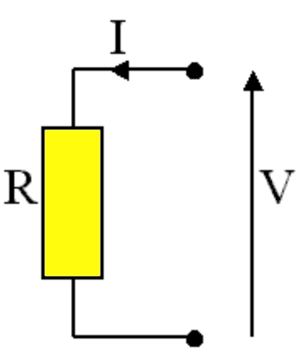Electric Joule's law and the Joule effect Joule's law and the Joule effect
The thermal effect of the electric current is represented by the dissipation of heat in a conductor crossed by an electric current.
This is due to the interaction of current particles (usually electrons) with the atoms of the conductor, interactions by which the former yield to the latter of their kinetic energy, contributing to the increase of thermal agitation in the mass of the conductor.
H = I 2 ∙ R ∙ t
where:
H or E - amount of heat or energy, [H] = J (Joule)
I - electric current intensity [I] = A (Amper)
R- electrical resistivity [R] = Ω (ohm)
t or Δt - time [t] = s (seconds)- Joules to watts
The power P in watts (W) is equal to the energy E in joules (J), divided by the time period t in seconds (s):
P(W)=E(J)/t(s)  Kirchhoff's theorem Kirchhoff's theorem
Kirchhoff's first law (or "node law") is an expression of the conservation of electrical charge in a node of an electrical network.
Definition: The sum of the currents of the (continuous) currents entering a network node is equal to the sum of the intensities of the currents flowing out of the same node. Its intensity is measured in amperes.
Q1 + Q4 = Q2 + Q3
or it can also be written as electrical charges:
i1 + i4 = i2 + i3 Ohms law and current intensity Ohms law and current intensity
Ohm's law, or the law of electric conduction, establishes the connections between:
- the intensity of the electric current (I) in an electrical circuit,
- voltage (V) or applied electrical voltage (U) and
- electrical resistance (R) in the circuit.
I = V / R Watts (W) to kilowatt-hours (kWh) Watts (W) to kilowatt-hours (kWh)
The energy E in kilowatt-hours (kWh) is equal to the power P in watts (W), times the time period t in hours (hr) divided by 1000:
E(kWh) = P(W) x t(hr) / 1000- Watts to volts
Watt (W) to Volt (V) calculator
How do watts turn into volts?
The voltage V in volts (V) is equal to the power P in watts (W), divided by the current I in amperes (A):
V(V)=P(W)/I(A)
|